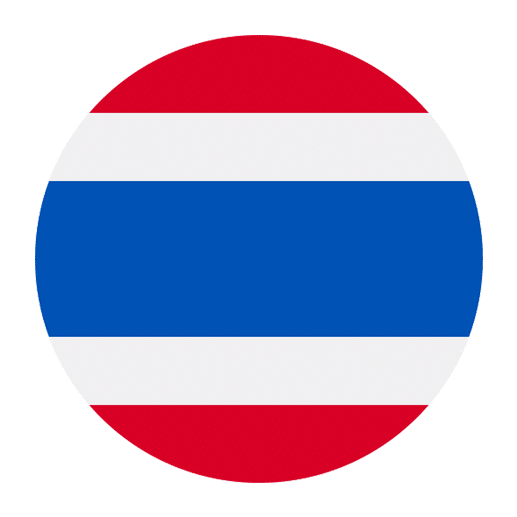Thailand, a country known for its rich cultural heritage, stunning landscapes, and delectable cuisine, is also home to a remarkable literary tradition. Thai literature, with its unique blend of history, mythology, and modernity, provides a window into the soul of this fascinating nation. In this article, we will delve into the lives and works of some of Thailand’s literary greats, exploring their contributions to the world of letters and their lasting impact on Thai culture.
Early Beginnings: Classical Literature
Thai literature can trace its roots back to the Sukhothai period (1238–1438), where the earliest known inscriptions and literary works were created. One of the most significant pieces from this era is the “Inscription of King Ramkhamhaeng,” often considered the first example of Thai writing. This inscription not only provides insights into the political and social life of the period but also showcases the early development of the Thai script.
Moving forward, the Ayutthaya period (1351–1767) saw the flourishing of classical Thai literature. During this time, literature was heavily influenced by Indian epics such as the Ramayana and Mahabharata, as well as Jataka tales from Buddhism. One of the most notable works from this period is the “Lilit Phra Lo,” a tragic romance that has been compared to Shakespeare’s “Romeo and Juliet.” This poem, written in the lilit form, combines prose and poetry to tell the story of two young lovers from rival kingdoms who meet a tragic end.
The Influence of Modernization: The Bangkok Era
The Bangkok era (1782–present) marks a significant shift in Thai literature, as the country began to modernize and open up to Western influences. King Rama II (1767–1824) was a great patron of the arts and literature, and his reign saw the creation of many important works. One of the most celebrated poets of this time was Sunthorn Phu (1786–1855), often hailed as Thailand’s Shakespeare.
Sunthorn Phu
Sunthorn Phu is best known for his epic poem “Phra Aphai Mani,” which he began writing in 1822 and continued to work on throughout his life. This 30,000-line poem tells the adventures of Phra Aphai Mani, a prince with a magical flute, and his encounters with various mythical creatures and beautiful maidens. The poem is not only a captivating adventure story but also a reflection of Thai society and culture during the early 19th century. Sunthorn Phu’s work remains widely read and admired in Thailand, and his influence on Thai literature is undeniable.
King Rama VI
Another significant figure in Thai literature from the Bangkok era is King Rama VI (1881–1925), also known as King Vajiravudh. A prolific writer and a strong advocate for modernization, King Rama VI used his literary talents to promote nationalism and social reform. He wrote plays, essays, and novels, often using his works to critique social issues and advocate for change. One of his most famous works is the play “The Masked Lover,” which explores themes of love, identity, and social class.
Contemporary Voices: Modern Thai Literature
The 20th century saw a surge in Thai literary output, with writers exploring new themes and experimenting with different forms and styles. This period of literary renaissance brought forth many talented writers whose works continue to resonate with readers today.
Kukrit Pramoj
One of the most influential figures in modern Thai literature is Kukrit Pramoj (1911–1995), a writer, politician, and intellectual. His novel “Four Reigns” (1953) is considered a masterpiece of Thai literature. The novel spans the reigns of four kings and provides a vivid portrayal of Thai society and history through the eyes of its protagonist, Mae Ploy. Kukrit’s ability to weave historical events with personal narratives makes “Four Reigns” a compelling and insightful read.
Prabda Yoon
Moving into the late 20th and early 21st centuries, Prabda Yoon (b. 1973) has emerged as a prominent voice in contemporary Thai literature. Known for his innovative and experimental writing style, Prabda has published numerous short stories, novels, and essays that challenge conventional storytelling norms. His collection of short stories, “The Sad Part Was,” has been translated into English and has garnered international acclaim. Prabda’s work often delves into the complexities of modern life, exploring themes of alienation, identity, and the human condition.
Duangchan Duangchan
Another notable contemporary writer is Duangchan Duangchan (b. 1959), whose works explore themes of gender, sexuality, and social justice. Her novel “Time in a Bottle” delves into the lives of women in Thai society, highlighting their struggles and resilience. Duangchan’s writing is characterized by its lyrical prose and deep empathy for her characters, making her an important voice in the landscape of modern Thai literature.
The Role of Translation: Bringing Thai Literature to the World
While Thai literature is rich and diverse, it has often been overlooked on the global stage due to language barriers. However, in recent years, there has been a growing effort to translate Thai literary works into English and other languages, allowing a wider audience to appreciate the beauty and depth of Thai storytelling.
Marcel Barang
One of the pioneers in translating Thai literature into English is Marcel Barang, a French translator who has dedicated much of his career to making Thai literature accessible to non-Thai readers. His translations of works by authors such as Kukrit Pramoj and Prabda Yoon have helped bring Thai literature to an international audience, shedding light on the richness of Thai culture and literary tradition.
Pongpol Adireksarn
Another significant translator is Pongpol Adireksarn, who has translated many classical Thai texts into English. His work has been instrumental in preserving and promoting Thai literary heritage, ensuring that these important works are not lost to future generations.
Conclusion
The literary greats of Thailand have made significant contributions to the world of letters, offering unique perspectives and insights into Thai culture, history, and society. From the classical works of the Sukhothai and Ayutthaya periods to the modern masterpieces of the Bangkok era and contemporary voices, Thai literature is a treasure trove of stories waiting to be discovered.
As more efforts are made to translate and promote Thai literature on the global stage, readers around the world have the opportunity to explore this rich and diverse literary tradition. Whether you’re a seasoned reader of Thai literature or just beginning to delve into its depths, there is always something new and exciting to discover in the works of Thailand’s literary greats.
In celebrating these writers and their contributions, we not only honor their legacy but also foster a deeper understanding and appreciation of Thai culture and the universal themes that connect us all. So, pick up a book by a Thai author, immerse yourself in their world, and experience the magic of Thai literature for yourself.

